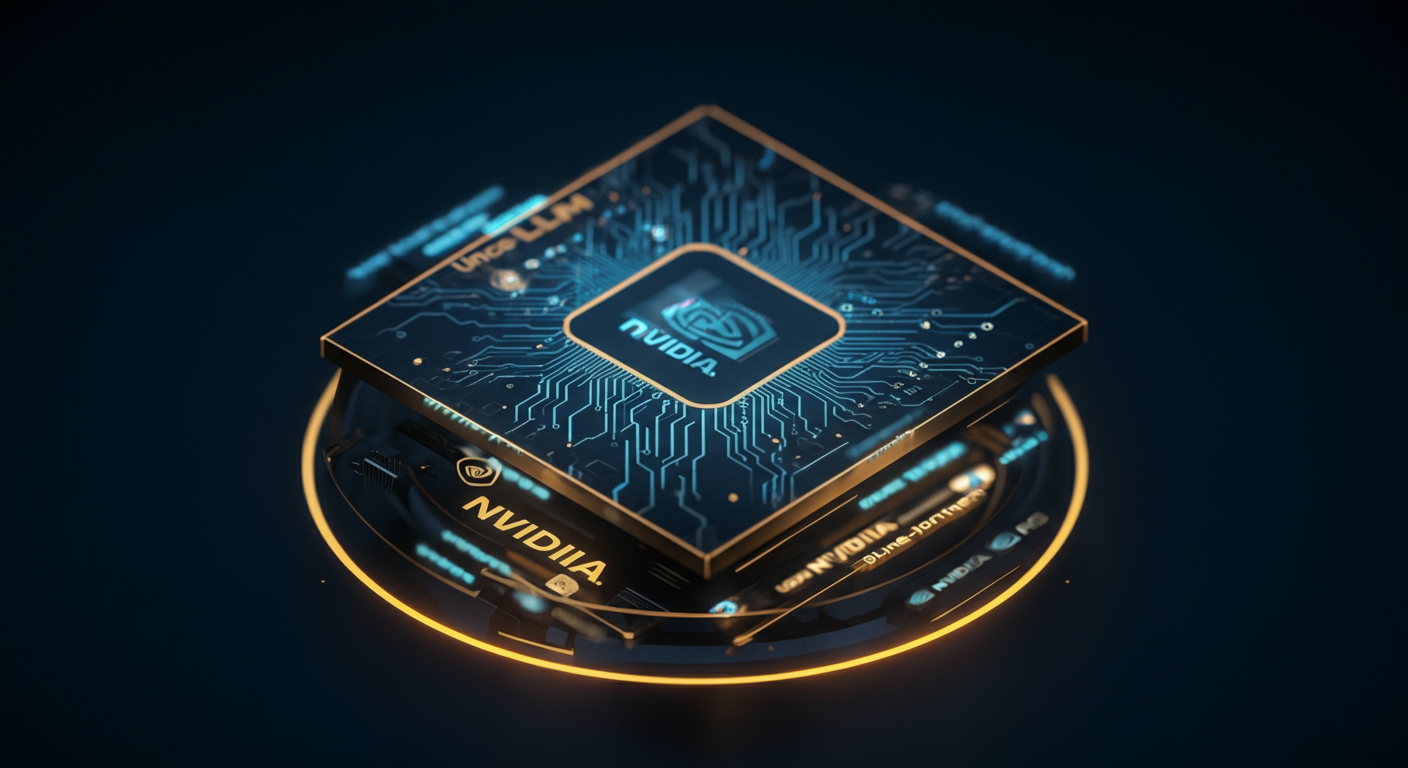Beyond Vibe Coding: Mastering the Art of Context Engineering in Modern Software Development

Introduction: The Evolution from Vibe Coding to Context Engineering
In the early days of software, projects were less complex, and developers often relied on intuition and personal experience – a practice we now playfully term "vibe coding." But can raw instinct alone cut it in today's AI-powered world?
The Limits of "Vibe Coding"
"Vibe coding" might sound whimsical, but it describes a very real, albeit outdated, approach:- Intuition-driven: Decisions are based on gut feelings rather than concrete data.
- Limited scalability: Works for small projects but falls apart with complex systems involving AI, machine learning, and intricate user interactions.
- Inconsistent results: Relies on individual developer's understanding, leading to unpredictable outcomes.
Context Engineering: A More Robust Approach
Enter context engineering – the systematic understanding and leveraging of the user and system environment. It's a data-driven revolution, moving us beyond guesswork:- Data-informed: Decisions are guided by comprehensive data analysis and user research.
- Structured approach: Employs specific methodologies to capture and utilize contextual information.
- User-centric: Prioritizes understanding the user's needs and environment to tailor the software experience.
Why Context Matters Now More Than Ever
As AI becomes increasingly integrated into applications, understanding context is paramount. Machine learning models, like those used by ChatGPT, need relevant data to provide accurate and useful responses. We have reached a point where sophisticated context engineering is now required.Key Benefits of Context Engineering
Context engineering offers several tangible advantages:- Improved Accuracy: By considering relevant data, AI-driven features become more precise.
- Reduced Errors: Data-driven decisions minimize mistakes based on guesswork.
- Enhanced User Experience: Software adapts to the user's needs, creating a more personalized experience.
Context engineering is the secret sauce for building software that truly understands and adapts to its users.
Understanding the Core Principles of Context Engineering
In software development, context isn't just about what you see on the screen; it's the whole environment.
- User environment: Think operating system, device type (mobile, desktop), and browser.
- System state: The current state of the application. Is the user logged in? What data is already loaded?
- Temporal data: The time of day, day of the week, or even seasonal trends all add to the context.
- User Behaviour: Knowing things like the user’s past actions and preferences.
Layers of Context: A Deeper Dive
Context can be broken down into distinct layers:
- Physical: Location, proximity to devices, environmental conditions (light, noise). Imagine an app adapting its display brightness based on ambient light levels.
- Digital: Browsing history, app usage, network connectivity.
- Social: User's social connections, group affiliations, and online communities. Think collaborative editing features.
- Cognitive: User's current task, goals, and mental state. This is the trickiest but most rewarding to address.
Gathering and Analyzing Contextual Data
Several techniques enable developers to tap into this rich vein of information:
- Sensor Data: Utilizing device sensors (GPS, accelerometer, microphone) to gather real-time physical context.
- User Behavior Tracking: Logging user interactions within the app to understand usage patterns.
- API Integrations: Leveraging external APIs to enrich contextual data with information like weather forecasts or social media trends. Consider integrating with a service like Browse AI to dynamically fetch relevant web data.
Ethical Considerations: Tread Carefully
Collecting and utilizing contextual data demands ethical responsibility.
- Privacy: Be transparent about data collection practices and obtain user consent.
- Security: Protect sensitive data from unauthorized access and breaches.
- Transparency: Explain how contextual data is being used to improve the user experience.
Machine Learning's Role: The Predictive Powerhouse
Machine learning algorithms can analyze contextual data to predict user needs and personalize experiences. For instance, you can use AI models fine-tuned using tools described in the Guide to Prompt Engineering.
In essence, mastering context engineering means building software that anticipates user needs and delivers personalized, intelligent experiences. The ethical considerations, however, remain paramount.
Context engineering is changing software development paradigms, with AI adapting to diverse industries through understanding the nuances of their unique environments.
Personalized User Experiences
- Tailored content: Context-aware systems can deliver content that resonates with individual user interests. For instance, an e-commerce site might suggest products based on browsing history and purchase patterns.
- Adaptive interfaces: Interfaces can dynamically adjust to user skill levels or preferences. A complex software package could present a simplified interface to new users while offering advanced tools to seasoned professionals. This approach mirrors how ChatGPT tailors its responses based on user input.
- Intelligent recommendations: AI can analyze user behavior to predict future needs, enhancing user engagement. Consider how streaming platforms like Spotify generate playlists tailored for each user, a trend that is covered in the Best AI Tools AI News section.
Smart Home Automation
- Proactive device control: Imagine a smart home that learns your routines and adjusts lighting, temperature, and entertainment systems automatically.
- Energy optimization: AI could monitor energy consumption patterns and adjust appliance usage to minimize waste.
- Security enhancements: Systems could analyze security camera footage in real-time, identifying potential threats and alerting authorities.
Healthcare
- Remote patient monitoring: Wearable sensors and AI algorithms can track vital signs and alert healthcare providers to anomalies, as explored in our AI news articles.
- Predictive diagnostics: AI can analyze patient data to identify individuals at risk of developing certain diseases, enabling early intervention.
- Personalized treatment plans: Consider AI-driven tools suggesting customized medication regimens or therapy approaches based on individual patient characteristics.
Autonomous Vehicles
- Adaptive navigation: Vehicles can adjust routes based on real-time traffic conditions and road hazards.
- Safety features: AI-powered systems can detect and respond to potential collisions faster than human drivers.
- Optimized route planning: Algorithms can analyze vast datasets to identify the most efficient routes, reducing travel time and fuel consumption.
Financial Services
- Fraud detection: AI algorithms can identify and flag suspicious transactions in real-time, mitigating financial losses.
- Risk assessment: Sophisticated models can evaluate creditworthiness more accurately than traditional methods.
- Personalized investment advice: AI can analyze market trends and individual financial goals to provide tailored investment recommendations.
Supply Chain Optimization
- Real-time tracking: AI can monitor the location and condition of goods as they move through the supply chain.
- Predictive maintenance: By analyzing sensor data, AI can predict equipment failures and schedule maintenance proactively.
- Demand forecasting: AI can analyze historical sales data, market trends, and external factors to predict future demand, optimizing inventory levels and reducing waste.
Context-aware software development is about to get a whole lot more interesting.
Sensor Technologies: The Eyes and Ears
Imagine software that understands its environment like you do. This is made possible with:
- Accelerometers and Gyroscopes: Detect movement and orientation. Think fitness trackers knowing if you're walking or running.
- GPS: Location awareness. Navigation apps are the obvious example, but think also of hyperlocal advertising.
- Environmental Sensors: Temperature, humidity, air quality. Smart thermostats that react to external conditions.
Edge Computing: Thinking Locally
- Faster Response Times: Processes data closer to the source, reducing latency. Critical for real-time applications like autonomous vehicles.
- Reduced Bandwidth Consumption: Less data needs to be sent to the cloud. Think processing sensor data from a remote oil rig.
Cloud Platforms: Scalable Intelligence
- Scalable Storage: Cloud platforms offer massive data storage for all the sensor data collected.
- Data Analytics and ML Services: Enable training complex models for context recognition. An example could be using Google Gemini, a multimodal AI model that can be used for various tasks such as image and video generation, code completion, and more.
NLP and Computer Vision: Understanding the World
- Natural Language Processing (NLP): Allows systems to understand user intent from text. Chatbots, for instance, can grasp the context of a conversation.
- Computer Vision: Enables object and scene recognition from images and videos. Consider AI identifying hazards in a factory setting.
IoT Platforms: Connecting the Dots
- Seamless Data Exchange: Connects and manages diverse devices, creating a unified data stream. Imagine smart city infrastructure that adapts to traffic flow in real time.
Explainable AI (XAI): Trust and Transparency
- Ensuring Transparency: Makes AI decision-making understandable. Vital for sensitive applications, like healthcare diagnostics, where trust is paramount.
Context engineering is rapidly changing how we build software, challenging traditional methodologies.
Context Engineering vs. Agile and Waterfall
Agile and Waterfall have long been the stalwarts, but they often miss the nuanced real-world contexts that AI thrives on.- Agile: Iterative, flexible, but can lack deep contextual understanding.
- Waterfall: Structured, rigid, and ill-suited for adapting to evolving contextual demands.
Enhancing Methodologies
Context engineering doesn't replace existing approaches; it augments them. Imagine Agile sprints informed by real-time user behavior and environmental data. Think of it as adding a powerful AI co-pilot.Impact on Architecture and Design
Traditional design patterns focus on structure; context engineering shifts the focus to adaptive behavior. Consider the difference:- Traditional: Fixed algorithms, pre-defined decision trees.
- Context-aware: AI dynamically adjusting code paths based on user location, device type, or even sentiment analysis.
Integrating with Legacy Systems
Retrofitting context engineering into existing monolithic applications is a challenge. Strategies include:- API wrappers: Abstracting legacy functionalities and adding context-aware interfaces.
- Microservices: Breaking monolithic apps into smaller, context-aware components.
Costs and Mitigation
Context engineering can increase development costs initially. Mitigation strategies include:- Phased rollout: Start with smaller, less critical components.
- Leveraging pre-trained models: Reduce the need for extensive custom training.
- Utilizing AI tool directories: Use resources like Best AI Tools to efficiently source solutions.
Context engineering is the key to unlocking AI's full potential, transforming how we interact with technology.
Sensor Tech and Data Analytics
The future will see context engineering propelled by advancements in sensor technology and sophisticated data analytics. Imagine sensors seamlessly integrated into our environment, capturing nuanced data about our location, activity, and even emotional state. This data, processed by cutting-edge analytics, will allow AI systems to understand and respond to user needs with unprecedented accuracy.AR/VR Convergence
Context engineering will deeply intertwine with augmented reality (AR) and virtual reality (VR).- AR applications will overlay digital information onto our physical world, guided by context-aware AI that understands our environment and provides relevant, real-time assistance.
- VR experiences will become more immersive and personalized, adapting to user behavior and preferences in real-time, creating truly believable and engaging virtual environments.
Proactive and Anticipatory Systems
We're moving towards systems that predict user needs. Generative AI will play a crucial role in creating synthetic contextual data, augmenting real-world data to train these proactive AI models.- AI assistants will anticipate our next steps.
- Smart homes adjusting settings based on our routines.
Ethical Implications
As AI becomes more context-aware, ethical considerations are paramount.- Ensuring privacy and data security is crucial
- Avoiding biases in context-aware systems is essential. AI bias needs addressing when AI knows too much.
Human-Centered Intelligence
Ultimately, context engineering aims to create more human-centered systems. The goal is for technology to seamlessly integrate into our lives, empowering us without overwhelming us. Expect context-aware AI to become a cornerstone of intelligent systems, creating truly intuitive and responsive technologies.Context engineering will continue to evolve, demanding creativity, ethical awareness, and collaboration across disciplines. This evolution promises to create a future where AI understands us better than ever before.
Context engineering has propelled some businesses far beyond the competition, demonstrating its power to revolutionize software development. Let's delve into specific examples.
Healthcare: Personalized Medicine with Precise Context
Imagine a hospital leveraging context engineering to deliver hyper-personalized care.- Methodology: Using AI to analyze patient history, real-time vital signs, and even social media activity (ethically, of course!). ChatGPT acts as a medical assistant, predicting potential complications before they escalate.
- Technologies: Integration of medical records systems, real-time sensor data, and a custom-built natural language processing (NLP) engine.
- Benefits: Reduced readmission rates by 15%, improved patient satisfaction scores, and a 10% decrease in treatment costs.
Finance: Risk Assessment with Holistic Data
A cutting-edge fintech company uses context engineering to assess credit risk far more accurately than traditional methods.- Methodology: Analyzing transactional data, news articles, and macroeconomic indicators to understand the full financial picture of loan applicants.
- Technologies: They utilize graph databases to map relationships between entities, allowing for sophisticated fraud detection. This also makes use of Software Developer Tools](https://best-ai-tools.org/tools/for/software-developers).
- Benefits: Reduced loan defaults by 20% and automated risk assessment, saving significant time and resources.
Transportation: Intelligent Traffic Management

A forward-thinking city implements context engineering to optimize traffic flow and reduce congestion.
- Methodology: Combining real-time traffic data, weather forecasts, and event schedules to dynamically adjust traffic light timings and suggest alternate routes.
- Technologies: AI algorithms analyze sensor data from connected vehicles and infrastructure to predict traffic patterns.
- Benefits: Decreased commute times by 12%, reduced carbon emissions, and improved overall urban mobility.
Crafting software that adapts to its environment is no longer science fiction, thanks to context engineering.
Getting Started with Context Engineering: A Practical Guide

Context engineering is about building systems that understand and respond to their environment, much like how a human adapts to new situations; consider it the secret sauce to truly intelligent applications. So where do you begin?
- Project Suitability: Start by assessing whether context engineering aligns with your project's goals. Does it require real-time adaptation based on user behavior, sensor data, or external events? For instance, a smart home system that learns user preferences (Learn/glossary/agent-ai-agent) would be an ideal candidate.
- Team Building: Assemble a cross-functional team including data scientists, software developers, and domain experts. Diversity in expertise is crucial for holistic context understanding.
- Tech Stack Selection: Choosing the right tools is key. Consider platforms that support data integration, real-time analytics, and machine learning, such as vector databases (Learn/glossary/vector-database) or specialized AI frameworks.
Data, Security, and Integration
"Data is the raw material of context engineering."
- Data Practices: Focus on collecting, cleaning, and analyzing relevant data. Establish best practices for data security, compliance, and ethical handling.
- Workflow Integration: Context engineering shouldn’t be an afterthought. Integrate it into your existing development workflows using agile methodologies and continuous integration/continuous deployment (CI/CD) pipelines.
- Testing & Validation: Implement robust testing strategies to validate context-aware systems. Simulate various scenarios to ensure accurate adaptation and prevent unintended consequences.
Continued Learning
- Resources: Platforms like Best AI Tools can serve as a great resource to discover state-of-the-art AI tools.
- Professional Development: Encourage your team to stay updated with the latest research and techniques through workshops, conferences, and online courses.
Conclusion: Embracing Context Engineering for a Smarter Future
Context engineering is more than just a buzzword; it's a fundamental shift in how we approach software development, leading to applications that are not only more accurate but also deeply relevant to the user's needs. It's the difference between a generic response and an intelligent, tailored interaction.
Benefits of Context Engineering
- Improved Accuracy: By understanding the environment and user intent, AI models can provide more precise and reliable results. For example, consider how ChatGPT can give you wildly different and more accurate responses, depending on how you frame your prompt.
- Enhanced User Experience: Context-aware applications offer personalized experiences, anticipating user needs and delivering relevant information. This is especially vital for tools used in Software Developer Tools as they are built for personalized workflows.
- Increased Efficiency: Automation powered by context engineering can streamline processes and reduce the need for manual intervention.
Ethical Considerations
With great power comes great responsibility, and context engineering is no exception.
As we build AI that understands and responds to context, we must prioritize privacy and data security. Ethical AI development ensures that user data is handled responsibly and that context-aware systems are free from bias. For instance, read more about building Building Ethical AI: A Practical Guide to Value-Driven Autonomous Agents.
A Call to Action
Embrace context engineering as a vital skill for the future of software development. Begin exploring the tools and techniques available today, and consider how you can leverage context to build smarter, more responsive applications. Start by browsing our directory of AI Tools and discover possibilities for revolutionizing your workflow.Context engineering offers a path to create AI that is both powerful and responsible. By prioritizing accuracy, user experience, and ethical considerations, we can build a smarter, more intuitive future.
Keywords
context engineering, vibe coding, software development, AI, machine learning, context-aware systems, sensor technologies, edge computing, personalized user experience, human-centered AI, explainable AI, contextual data analysis, adaptive interfaces, predictive analytics
Hashtags
#ContextEngineering #AISoftware #MachineLearning #HumanCenteredAI #SoftwareDevelopment
Recommended AI tools
ChatGPT
Conversational AI
AI research, productivity, and conversation—smarter thinking, deeper insights.
Sora
Video Generation
Create stunning, realistic videos and audio from text, images, or video—remix and collaborate with Sora, OpenAI’s advanced generative video app.
Google Gemini
Conversational AI
Your everyday Google AI assistant for creativity, research, and productivity
Perplexity
Search & Discovery
Clear answers from reliable sources, powered by AI.
DeepSeek
Conversational AI
Efficient open-weight AI models for advanced reasoning and research
Freepik AI Image Generator
Image Generation
Generate on-brand AI images from text, sketches, or photos—fast, realistic, and ready for commercial use.
About the Author

Written by
Dr. William Bobos
Dr. William Bobos (known as 'Dr. Bob') is a long-time AI expert focused on practical evaluations of AI tools and frameworks. He frequently tests new releases, reads academic papers, and tracks industry news to translate breakthroughs into real-world use. At Best AI Tools, he curates clear, actionable insights for builders, researchers, and decision-makers.
More from Dr.
